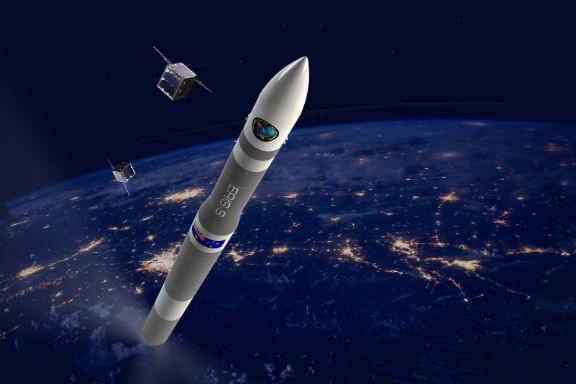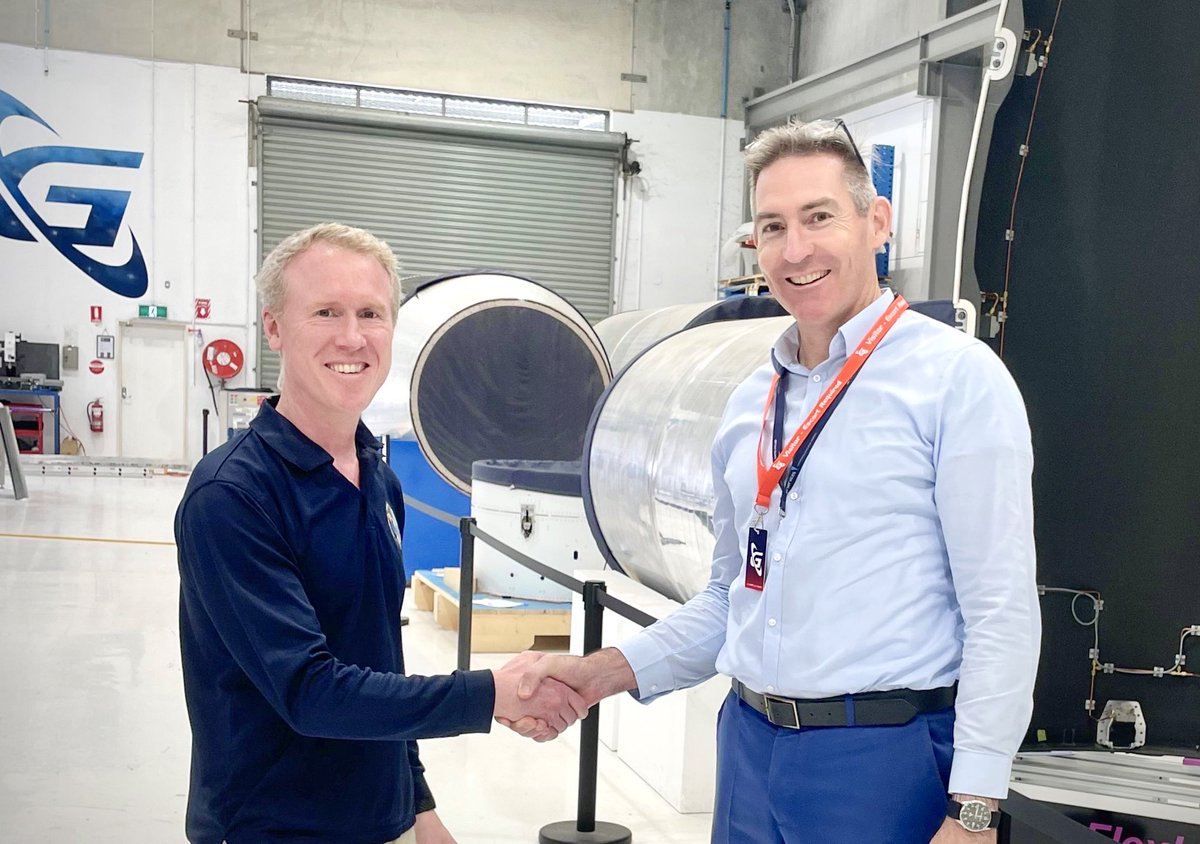Australian rocket company Gilmour Space Technologies is getting one step closer to its first commercial launch in late 2022. The pioneering launch services company known for its orbital-class hybrid rocket technology has unveiled Phoenix, a new 3D printed liquid oxygen kerosene (LOx/Kero) engine that will power the third stage of its Eris rocket to orbit. Even more so, last week, Gilmour shared a video of a successful 190-second full mission duration test-fire of its new regeneratively-cooled liquid rocket engine.
Capable of delivering up to 1,000 kilograms to low Earth orbit (LEO), Gilmour’s Eris is one of Australia’s most highly awaited rocket launches. Establishing a new paradigm for the small-payload customers, the three-stage rocket is targeted to begin launches to low earth orbits from the Bowen Orbital Spaceport at Abbot Point, in north Queensland, in only a few months. To meet this global demand, Gilmour’s first Eris rockets will be launching payloads up to 305 kg into low earth orbits, 215 kg into 500 kilometers sun-synchronous orbits, or 305 kilograms into 500 km equatorial orbits. As it gets ready for its maiden voyage, Gilmour has already closed two commercial launch contracts (including one with fellow local startup Space Machines), targeting 12 rockets a year by 2025.
According to CEO and Founder Adam Gilmour, both the first and second stages of Eris will be powered by Sirius, Gilmour’s large hybrid rocket engine, undergoing qualification tests. Instead, the third stage will get its thrust from five Phoenix engines developed to give the rocket an “extra performance” needed to deliver substantially more payload to orbit.
Liquid rocket engines are used by most rocket companies worldwide, including SpaceX, and are notoriously complex and expensive to develop. But Adam Gilmour points out that Phoenix––its second orbital-class rocket engine system––has demonstrated world-class sovereign capability in two different rocket systems developed by a homegrown small and medium-sized enterprise (SME). Moreover, its recent successful Mission Duty Cycle test is a pinnacle milestone in engine development, proving that all key engine components (turbopumps, injectors, chamber, igniters, and more) can operate in a flight-like configuration.
“The team has done exceptionally well to design, build, and test this new engine in just over a year while also scaling our main hybrid rocket engine, building out the rest of the vehicle, and pushing to develop a new orbital launch site in Australia,” added Gilmour. “Our goal has always been to provide an affordable and reliable option for accessing space, and we believe this unique engine combination will allow us to achieve that for our customers.”
 Rendering of Gilmour Space Eris rocket. Image courtesy of Gilmour Space.
Rendering of Gilmour Space Eris rocket. Image courtesy of Gilmour Space.Founded in 2013, Gilmour Space has grown to become one of Australia’s largest space companies, raising more than $130 million to date and a workforce of over 140 employees. As one of the most active companies in Australia’s emerging commercial space sector, it was chosen to lead the Australian Space Manufacturing Network (ASMN), a national network with a mission to advance local space manufacturing and future launches, which recently received an AU$52 million ($39 million) government grant to create, commercialize and finally launch space technology on local soil.
As Gilmour pioneers new and innovative hybrid propulsion technologies, it works to ensure a future of lower-cost access to space. Towards that goal, the company also signed a memorandum of understanding with Air Services, Australia’s air navigation service provider, to help facilitate safe air traffic management during Gilmour’s launches.
Also, as part of the government’s AU$7 billion (roughly $5 billion) investment in new space capabilities, Gilmour was recently chosen to build and launch a prototype surveillance satellite for the country’s Department of Defence on its Eris rocket in 2023. The AU$15 million ($10.7 million) partnership is a big milestone for an Australian-owned SME developing sovereign space and launch capabilities. Once complete, the G-class satellite will help counter threats and assure the country continued access to space-based intelligence, surveillance, and reconnaissance.
 Adam Gilmour with Justin Parker, Head of Air Services Safety & Environment Assessment (on right). Image courtesy of Gilmour Space via Facebook.
Adam Gilmour with Justin Parker, Head of Air Services Safety & Environment Assessment (on right). Image courtesy of Gilmour Space via Facebook.Knowing that the space industry will demand thousands of qualified individuals in the future, Gilmour is also encouraging high school and university students to get involved in building, programming, and launching rockets and satellites to space. In that spirit, a few of its latest initiatives include space flight simulators for Queensland’s Bowen State high schoolers and a series of Gilmour Space expert talks with Queensland University of Technology (QUT) students. At this pace, it is clear that Gilmour Space will be a leading force in Australia’s rocket industry, developing and launching hybrid launch vehicles for small satellites to LEO pretty soon.
Subscribe to Our Email Newsletter
Stay up-to-date on all the latest news from the 3D printing industry and receive information and offers from third party vendors.
Print Services
Upload your 3D Models and get them printed quickly and efficiently.
You May Also Like
Reinventing Reindustrialization: Why NAVWAR Project Manager Spencer Koroly Invented a Made-in-America 3D Printer
It has become virtually impossible to regularly follow additive manufacturing (AM) industry news and not stumble across the term “defense industrial base” (DIB), a concept encompassing all the many diverse...
Inside The Barnes Global Advisors’ Vision for a Stronger AM Ecosystem
As additive manufacturing (AM) continues to revolutionize the industrial landscape, Pittsburgh-based consultancy The Barnes Global Advisors (TBGA) is helping shape what that future looks like. As the largest independent AM...
Ruggedized: How USMC Innovation Officer Matt Pine Navigates 3D Printing in the Military
Disclaimer: Matt Pine’s views are not the views of the Department of Defense nor the U.S. Marine Corps Throughout this decade thus far, the military’s adoption of additive manufacturing (AM)...
U.S. Congress Calls Out 3D Printing in Proposal for Commercial Reserve Manufacturing Network
Last week, the U.S. House of Representatives’ Appropriations Committee moved the FY 2026 defense bill forward to the House floor. Included in the legislation is a $131 million proposal for...

































